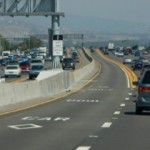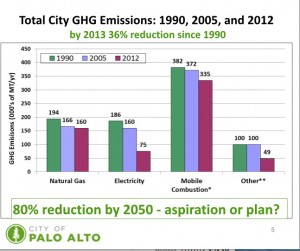The Earth Institute at University College Dublin (UCD) organised a conference on sustainable development reaching out to the Irish Diaspora. The rationale for the Earth Gathering, as articulated by Frank Convery, one of the organizers, was for “…those of us working in Ireland to get to know those living and working elsewhere who have an interest in Ireland and in sustainable development,” and for those members of the Irish Diaspora to “find out about us, our capabilities and our dreams.” It worked well.
The experience was properly serious, befitting the seriousness of the issue and the gathering of an impressive cadre of bright, articulate people working or studying in the field of sustainable development, either in Ireland or abroad, most if not all with some Irish ancestry or interest. But it was also enlightening in other ways, perhaps best exemplified by the surprising and brilliant performance by the noted Uilleann piper Eion Dillon as an introduction to the talk by Dr. Kerri-Ann Jones of the US State Department. See link to video of performance in Sources below. Also, the opportunities for socializing and networking were well spaced and productive.
There was an opening evening launch, with a spirited welcoming talk by Eamon Ryan, leader of the Irish Green Party, followed by a day of general presentations on developments in research, in practical applications, in industry, and in policy, and finally a day of technical Pop Up sessions.
Reporting on such a three-day conference is difficult enough, because of the length and specialized focus of the presentations, but covering over a dozen Pop Up sessions on the third day, many running at the same time, was physically impossible. The best we can do here is to cover several of the main presentations and Pop Ups to give you bits and pieces of the work that was presented at the conference, what I’ll call “loose chippings” after the loose stones or gravel that pop up from freshly-surfaced roads along the Irish countryside. Hopefully this will encourage you to watch the full presentations that will be available on the Earth Institute website by early December. See link in Sources below.
Loose Chippings: General Presentations
On the first full day, after brief comments by government officials from the EU and Irish governments, we jumped into the realities of climate change with UCD biology Professor Jennifer McElwain. She forewarned us that she had some doom and gloom for us, which is arguably unavoidable if we are to finally address the risks of climate change. Some of her discussion, especially with regard to the current historic levels of CO2, at close to 400 ppm and possible levels of 900 ppm by 2100, and the consequences of such levels, caught the attention of the Irish Times, always useful. Professor McElwain’s gloom, more than doom, was intensified and at the same time softened by her use of photos of her young daughter, pointing out at different moments what the world will look like, because of climate change, when her daughter is at different ages. This same sense of urgency to protect those who are vulnerable, like our children, grandchildren, family members, drives others, including James Hansen, recently retired from NASA’s Goddard Institute for Space Studies and Columbia University’s Earth Institute and author of Storms of My Grandchildren (2009).
In the question and answer period, someone asked speakers to name the one measure, either in mitigation or adaptation, they thought critical. While others hesitated a bit, McElwain answered quickly and directly, “energy conservation.”
Sean O’Sullivan delivered a clever and literate keynote address on re-inventing transportation. O’Sullivan, born in New York of Irish parents and based in Kinsale, County Cork, is founder and Managing Director of Carma, a real-time technology company. Carma uses smart technology for sharing assets or resources, called “collaborative consumption,” like the various and growing shared bike plans in cities, or in this case dealing with wasted space in cars. The company has produced breakthrough smartphone apps that allow users to arrange carpools at any time and place. O’Sullivan distinguished carpooling — the traditional form of sharing, not used widely but still at 10% in US where public transport only gets 5% of users — and ‘slugging,” or casual carpooling where people stand in a spot and wait for a car to pick them up, and “crowdsourcing” which is real-time carpooling. Crowdsourced pooling has been made possible by advances in computing that lower the “friction of participation” as well as costs, since drivers and passengers share costs. It is also possible because by 2013, in the US, 91% of the adult population owned a cell phone, and 56% of them owned smartphones. In Ireland 57% and in UK 62% own smartphones, with numbers increasing yearly. O’Sullivan explored real-time carpooling in the various cities where it has been implemented, and where the initial focus is on transport corridors. A critical mass is necessary for the success of the real-time carpooling, O’Sullivan suggesting roughly about 1,000 cars per hour per transport route, and sometimes substantially fewer cars. In most cases policy changes in the cities are needed, such as providing tax deductions for verified carpooling, creating HOV lanes, and intermodal interoperability. When the issue of the dangers of pooling was raised, O’Sullivan pointed out that riding elevators is a shared ride, and we’re used to that, and there is some screening by the providers of the services.
While O’Sullivan showed us what new technology can do to further sustainable practices, Pat Burt, a Council member and former mayor of Palo Alto, California and sustainable technology entrepreneur, took us on a tour of Palo Alto’s plans for sustainability goals, including GHG reductions of 80% by 2050 from 1990 levels and a carbon neutral electricity supply. The background information about Palo Alto was helpful in appreciating the context for such ambitious goals. Palo Alto, just south of San Francisco, is an affluent community with progressive values, and birthplace of Google and Facebook, so one can imagine the community’s support for climate change initiatives. Palo Alto also owns and operates its utility services, including gas, wastewater, electric, fiber, and water. By 2013, the city has reduced total city GHG emissions by 36% over 1990 levels, so that it is almost half-way to its 2050 goal, and it now plans on reducing GHG emissions by 80% by 2030. These reductions have lowered the city’s operating cost by $500,000 per year and per capita residential utility bills. By 2013, the city has also achieved a carbon neutral electricity portfolio, relying on efficiency, local generation, and renewable energy sources, including existing hydroelectric (that constitutes 50% of renewables), wind, solar, and biogas. Burt certainly demonstrated that where there is a will, there is a way, and it helps to have an effluent community behind your plans. In Ireland, the affluence was short-lived, and has affected sustainable development policies, but even in the jaws of the Celtic Tiger we saw little in the way of ambitious plans by the government to advance sustainable development, with the caveat that the Green Party at least had the will if not the power.
Kevin McGeeney, Managing Partner at SCM in Switzerland, a leading commodity broking firm, then provided a clinical dissection of what we need to do now, from an investment-banker-market-solution perspective which holds firm to the belief that if a solution is not grounded in economics, it won’t work. The task is to reduce GHG emissions from energy use without a negative impact on economic development, i.e., no reduction in growth. McGeeney argued that no growth is not an option in light of the population increases in the developing countries. As for how we can sustain economic growth without destroying the planet, McGeeney laid out the shortcomings of efforts so far, starting with the actors. Few trust governments (in the US, a poll showed that people have a higher opinion of witches and hemorroids than Congress); public protest is muted (environment does not score high on most lists of concerns); the for-profit private sector is investing huge sums of money in clean technology, but with few successes; and, local government can help (as Burt showed) but it’s not enough.
In analyzing what actions might work, McGeeney pointed out that higher energy prices reduce consumption, and save on emissions, and that developed countries have the options to abandon energy subsidies, price externalities, and/or tax energy to promote higher energy prices.
McGeeney opined that eliminating subsidies, so engrained, will not work, politically. He then argued, bluntly and persuasively, that the answer is to raise taxes on energy, and only progressive governments will do that. Not only will carbon taxes reduce consumption, but they will enable renewable energy and energy technology companies.
The argument is a difficult, but critical, one as it means arguing for people (a/k/a voters) to pay higher energy bills. We see where this is leading in current UK politics. So to hear the argument, forcefully put, from someone in the investment business is quite helpful. His argument is supported by recent work from the OECD that trading systems and broad-based carbon taxes are the most economically efficient policy tools to mitigate climate change. See Sources.
In the Question and Answer period, Sue Scott, affiliated with the Irish Economic and Social Research Institute (ESRI), suggested that ending subsidies was not as unworkable as McGeeney stated. While it is a complicated issue, it is a relatively new issue and it is possible for the broad public to fasten on the issue and demand an end to subsidies. With regard to energy efficiency, McGeeney thought it hard to get off the ground without long-term support from governments, which seemed to be missing — perhaps an understatement. He also noted that if the US becomes a major exporter of energy supplies, it will have no incentive to keep energy prices low, despite its long-term commitment to low prices. He also noted that money keeps going into clean tech companies because while there has not been much success so far, the pay off is huge if there is a successful energy venture.
There were other talks by Dr. Kerri-Ann Jones of the US State Department, Martin Curley from Intel, and John O’Donoghue CEO of EnBio.
Loose Chippings: Pop Up Sessions
More than a dozen sessions were offered on the last day, some in the morning, some in the afternoon, some at both times. The topics covered in these sessions, by a number of presenters, many from UCD, some from other universities or research facilities, were by and large very technical, science-based and research-oriented. They were a means for attendees to learn the latest in research findings on the various issues.
One session, as an example, covered “Food for the Future: A Focus on Crop Production.” The session was chaired by Dr. Fiona Doohan, Interim Director of UCD Earth Institute, and one of the organisers of the Earth Gathering, along with Frank Convery. Presenters were: Dr. Ewen Mullins, of Teagasc, the Irish Agriculture and Food Development Authority; Professor Maurice Moloney, of Rothamsted Research UK; Professor Bruce Osborne of UCD School of Biology and Environmental Science and UCD Earth Institute; and, Professor Alan Renwick of UCD School of Agriculture and Food Science and UCD Earth Institute.
Dr. Mullins reported on the threats to potato crops from blight, the costs of the blight, across the EU, and the various ways to stave off the blight. His focus was on current research studies at Teagasc to assess and monitor the impacts of genetically modified (GM) crops, including impacts on biological components of soil. He provided the studies showing that GM crops can produce blight-resitant potatoes in a short time, in contrast with other methods. In light of the intense debate about GM, in Ireland and elsewhere, it was understandable that Mullins was careful to stress that he was merely providing the most recent research on GM and not any policy on GM, and that the goal was to advocate public research, knowledge and debate.
Following this technical talk, Professor Moloney provided a larger context for the impacts of climate change on agriculture, the history of food price spikes, and the importance of water resources necessary for agriculture. He was unequivocal about the value of crop biotechnology, including GM crops, for the future of agriculture. Returning to a very technical perspective, Professor Osborne provided a discussion of the future climate conditions and their impact on Irish arable sector, with the need for enhanced productivity, reduced environmental footprint, and increased crop diversification. Based on research projects, Osborne focused on the volatility of crop production from the interaction of climate conditions, such as high temperatures, drought and CO2 levels. He suggested that there was some evidence that high concentrations of CO2 can reduce the impacts of high temperature and water deficits.
Finally, for Professor Renwick the question of which crops were right for Ireland’s future was unsettled and there are important economic-social issues, besides the purely science/technical issues, that are implicated. He examined the resources needed for crops, and the stresses on those resources, and the challenge on how to produce more food for more people with fewer resources. As he pointedly suggested: Just because you can do it doesn’t mean you should do it. Rather we need to question what will be environmentally sustainable, and socially acceptable at the same time it is economically viable. Affecting these questions is the reality that transnational corporations have replaced state agencies as the key intervenors in food production and supply, with for example 4 companies controlling 75-90% of global grain trade and 3 companies controlling about 50% of proprietary seed market. Renwick ended with the question of whether we actually need new crops or societal change. Biotechnology can increase production, but so can empowering women in some countries, with as much as a 30% increase. Is the problem with food shortages a matter of availability of food or access to it or, as others have articulated, is it a question of food production or distribution.
Another Pop Up session covered “Traditional and Crowd Sourced Geographic Data as Research Tools,” where we learned how Geographic Information Systems (GIS) are being used in a wide variety of research disciplines. It was especially interesting because we had heard Sean O’Sullivan demonstrate a very practical application of crowdsourcing using GIS and smartphones for carpooling. Research use of crowdsourced data is merely an extension, with wide spread opportunities and capabilities, of the use of volunteers by environmental groups to record field observations, e.g., spotting of birds or violations of turf cutting. We saw research and applications for mapping how forests are being used, and their impacts on assessing carbon emissions and sequestration; for use of smartphone Apps to monitor farm practices subject to EU farm subsidy payments or for habitat sustainability modeling; for tree metrics where someone can walk through a forest with a laser scanner to collect data on size and value of trees and to map where they are located within the larger forest for harvesting; for mapping grass growth to help farmers decide on the length of grass season for grazing (interestingly, farmers are comfortable using smartphones but not always computers). Some drawbacks were explored including questions about the reliability of the data generated, although backing observations up with photos helps; lack of training for users of the technology; and, the ethics of telling, or not telling, people what crowdsourced data is being used for.
Conclusion
An interesting dimension to the Earth Gathering was the very notion behind the conference. What’s the difference between a conference on recent developments in sustainability issues, that takes place in Dublin and is open to anyone to attend, and this Earth Gathering. Here was a conference gathering together in Dublin those interested and actively engaged in sustainable development, and also connected to Ireland by ancestry or other ways, with those in Ireland, primarily UCD, engaged in the same work. The Earth Gathering was like UCD in effect inviting Ireland’s alumni, the Diaspora, to return home to learn and share and re-connect. Note 1.
At the end of the day, the conference worked well as a space where people who are dedicated to finding better ways to live on this earth could share those concerns and knowledge with others who are not only engaged by the same questions but who share a connection and commitment with how those questions are played out on the island of Ireland.
Ireland is a small country with limited financial resources but a wealth of natural resources, and a cadre of highly-trained, creative scientists working to understand and protect those natural resources. Connecting that cadre to those in the Irish Diaspora with similar training and commitments, hopefully through an on-going network, can only enhance the collective work of both.
The Earth Gathering was a smart idea, informative and fun. Note 2.
Notes
Note 1. We really should put to rest the myth that there are 35-40 million members of the Irish Diaspora in the United States. The basis of this myth is a question on the US Census survey asking for a person’s ancestry or ethnic origin, and the ticking of a box or entry of Irish ancestry indicates nothing about whether that person has any interest, connection, or knowledge of Ireland or even where Ireland is. Some people living in Appalachia are distant descendants of Scotch-Irish, and might tick the Irish as ancestors, but they certainly would not consider themselves part of any diaspora.
Note 2. In the interest of full disclosure, the Earth Institute/UCD paid for the lodgings of the author of this Report during the 3 days of the conference. The author paid for other nights in Dublin, airfare and other expenses of the trip.
Sources
Performance by the noted Irish Uilleann piper, Eoin Dillon, of the band Kila, before talk by Dr. Kerri-Ann Jones, US State Department.
University College Dublin Earth Institute at earth.ucd.ie/ – the organisers plan on posting videos of the general presentations on the Earth Institute website in early December.
Carma car.ma
Organisation for Economic Co-operation and Development (OECD), Effective Carbon Prices
www.oecd-ilibrary.org/environment/effective-carbon-prices_9789264196964-en
The image of the “gathering” is from http:/www.freedomtrainministries.com








No comments yet, add your own below